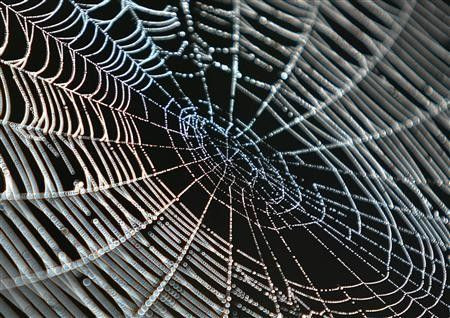Spider Silk Used to Create ‘Bulletproof’ Human Skin

A bio-art project created by a team of Utah researchers and a Dutch artist has given researchers hope that genetically engineered spider silk can be used to heal large wounds by spurring the growth of skin, ligament and tendons.
Dutch artist Jalila Essaidi, along with Forensics Genomics Consortium Netherlands, created a length of nearly bulletproof skin created from a combination of spider silk and human skin cells. Essaidi recruited the help of Randy Lewis, a researcher at Utah State University who - along with his collaborators - recently gained international attention when they discovered a realistic way to manufacture silk fibers using goats and silkworms that had spider genes inserted into their genetic makeup.
Spider silk, which is purportedly five times stronger than steel, is one of the strongest known fibers on earth.
Essaidi told The Associated Press she initially aimed to demonstrate the grotesque factor of the mammal-spider genetic combination by weaving together sections of human skin cells and genetically engineered spools of silk from silkworms capable of stopping low-speed bullets.
Essaidi fired .22 caliber bullets at the skin, which was placed on a special gelatin block. Using a high-speed camera, the artist captured a bullet fired at a reduced speed piercing through skin woven with an ordinary worm's silk. However, when she fired at the genetically engineered combination, the skin didn't break, although Essaidi said it was not capable of repelling the bullet of a .22 caliber rifle at normal speeds.
Lewis told the AP that while he was surprised the genetically engineered silk stopped a bullet, being able to recreate human skin was the most satisfying part of the experiment.
Without a doubt the most exciting part for us is the fact that they were able to recreate the skin on top of our fibers. It's something we haven't done. Nobody has worked in that area, he said.
On her blog, Essaidi pondered the implications of the experiment, likening its benefits to the legend of Achilles, whose entire body was virtually invulnerable - or bulletproof - aside from his heel.
Will we in the near future due to biotechnology no longer need to descend from a godly bloodline in order to have traits like invulnerability? she wrote.
Lewis is more intrigued by the immediate benefits of the research. Being able to grow human skin cells could be immensely helpful for surgeons grafting large sections of skin onto burn victims or other individuals with considerable wounds. In particular, the strength and elasticity of human skin intertwined with genetically engineered silk could make it easier for doctors to perform those procedures without worrying about ripping the delicate skin.
However, Lewis said that researchers need to do more experiments to test which materials human skin cell can successfully grow on.
Other researchers have also suggested that spider silk can be an important tool in creating artificial skin. Scientists from the Department of Plastic, Hand and Reconstructive Surgery at Medical School Hannover in Germany recently published a study that found human skin cells could flourish on the silk fibers of golden orb web spiders if they were properly nurtured.
© Copyright IBTimes 2024. All rights reserved.











